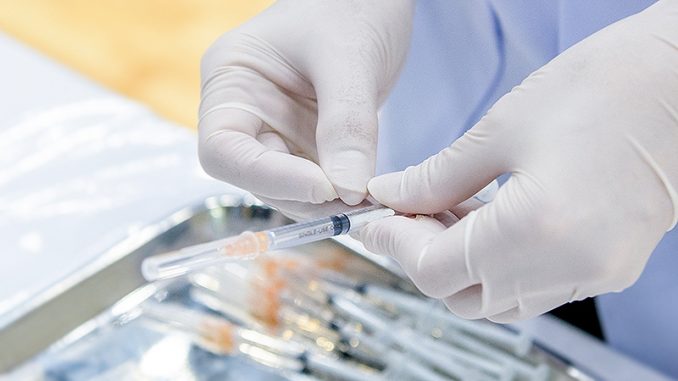
The Safer Alternatives for Emergency Response (SAFER) program provides a safe supply of substances to prevent drug overdose deaths, according to a new report.
The program has been operating in Vancouver, British Columbia, since April 2021. So far, the program has enrolled 58 participants who have reported benefits from having new options when other forms of treatment or harm reduction didn’t work. In addition, doctors who work with the program have reported increased medication adherence among the participants, as well as better chronic disease management.
Similar safe supply programs are being implemented or considered in other places across Canada. Since 2019, Health Canada has funded 18 safe supply pilot programs.

Christy Sutherland, MD
“When we look at the number of overdose deaths, it should be zero. These are preventable deaths,” author Christy Sutherland, MD, medical director at the PHS Community Services Society in Vancouver, which operates the SAFER program, told Medscape Medical News.
“As clinicians, we can see that the tools we have are working less because of prohibition. It drives the market to provide more potent and more dangerous options,” she said. “It’s critical that we disrupt the illicit market and provide medical solutions to keep people safe.”
The report was published in the Canadian Medical Association Journal on May 16.
Safe Supply Programs
Between January 2016 and June 2021, more than 24,000 people died from opioid toxicity in Canada, according to the authors. A key driver of the ongoing public health crisis has been the introduction of illicit fentanyl and other dangerous substances into the unregulated drug supply.
In recent years, several harm-reduction options and substance use disorder treatment programs have been introduced in Canada to stem overdose deaths. However, they haven’t been sufficient, and the number of deaths continues to rise.
“In 2010, methadone worked, but now even high doses don’t keep people out of withdrawal due to the infiltration of fentanyl,” Sutherland said. “It’s clinically not working anymore. People are now going through benzodiazepine withdrawal and opiate withdrawal at the same time.”
The changes have led doctors to call for programs that provide legal and regulated sources of psychoactive substances, also known as “safe supply” programs. In particular, low-barrier and flexible options are necessary to meet the needs of various people in the community.
In Vancouver, the SAFER program provides medications that are prescribed off-label as substitutes to the illicit drug supply. A multidisciplinary team oversees the program, including doctors, nurses, pharmacists, social workers, and people who have experience living with substance use.
The program’s approach is akin to the use of medications as treatments for substance use disorder, such as opioid-agonist therapy. However, instead of promoting abstinence, the goal of SAFER is to prevent overdose deaths and other consequences by decreasing reliance on the unregulated drug market.
Enrolled participants can access medications, including opioids such as hydromorphone and fentanyl, as a substitute for the unregulated substances that they consume. A notable aspect of SAFER is the offer of fentanyl — with a known potency and without dangerous adulterants found in the local drug supply.
Promoting Participant Autonomy
Given the increasing rate of overdose deaths involving stimulants in Canada, the program also offers prescribed psychostimulants, such as methylphenidate and dextroamphetamine.
The program focuses on harm reduction and promoting participant autonomy. SAFER doesn’t have a predetermined schedule for medication access, which allows participants to return as they need.
“Creating this program has required patience to change our practices,” Sutherland said. “As you learn more and do more, you’re always growing because you care about your patients and want to help them, especially vulnerable people with a high risk for death.”
The SAFER program is integrated into healthcare and social services, and participants have access to on-site primary care from clinicians trained in addiction medicine. The program is located alongside a low-barrier prevention site, where supplies such as syringes, take-home naloxone kits, and drug-checking services are available.
The SAFER program will undergo a scientific evaluation, led by two of the co-authors, which will include about 200 participants. During a 2-year period, the evaluation will assess whether the program reduces the risk for overdose deaths and supports access to primary care, harm reduction, and substance use disorder treatment. In addition, the researchers will analyze other key outcomes, such as fatal vs nonfatal overdoses, medication adherence, and the qualitative lived experience of participants.
The End of Prohibition?
“We’ve had the same challenges with people buying illegal drugs on the street for almost 30 years, but about 5 years ago, that all changed when fentanyl became a prominent drug, and overdose deaths skyrocketed,” Mark Tyndall, MD, a public health professor at the University of British Columbia, told Medscape Medical News.

Mark Tyndall, MD
Tyndall is also executive director of the British Columbia Centre for Disease Control and executive director of MySafe Society, a safe supply program in Canada for those with opioid addiction. He is not involved in the SAFER program.
SAFER and MySafe Society are positioned as low-barrier programs, he said, meaning that the public health response is primarily focused on preventing deaths and helping people to get access to medication that won’t kill them. The idea is to meet people where they are today.
However, these programs still face major barriers such as limitations from federal regulators and stigmas around illicit drugs and harm-reduction programs.
“These beliefs are entrenched, and it takes a long time to help people understand that prohibition means that dangerous drugs are on the street,” he said. “I don’t think way more people are using than 10 years ago, but there was a supply of heroin that was stable in potency back then, and people weren’t dying.”
Ultimately, Tyndall said, drug policy experts would like to create a regulated supply, similar to the supply of cannabis. The political and regulatory process may take much longer to catch up, but he believes that it’s the most ethical way to reduce overdose deaths and the unregulated drug supply.
“The harshest critics of harm reduction often go to the liquor store every weekend,” he said. “It’s going to be a long process before people think this way, but having fentanyl and other dangerous drugs on the street has signaled the end stage of prohibition.”
The SAFER program is operated by PHS Community Services Society in partnership with Vancouver Coastal Health and funded through Health Canada’s Substance Use and Addiction Program. Tyndall reported no relevant disclosures.
CMAJ. Published online May 16, 2022. Full text
Follow Medscape on Facebook, Twitter, Instagram, and YouTube
Source: Read Full Article